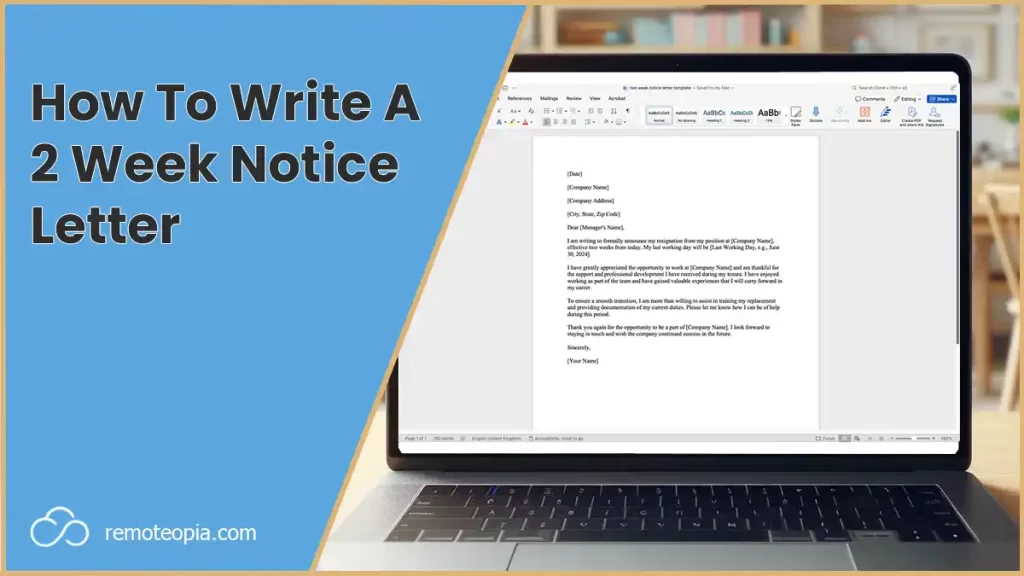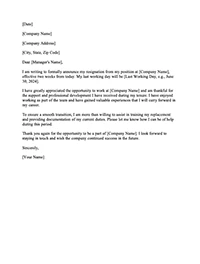
Deciding to leave a job can be tough, but handling your resignation professionally doesn’t have to be. One important step is to write a clear and respectful two weeks notice letter.
A well-written two weeks notice letter ensures you leave on good terms and maintains professional courtesy.
Whenever I’ve left a position, I’ve always tried to show gratitude and maintain a good relationship with my boss. How you resign can impact your future references and professional relationships. Taking the time to craft a thoughtful two weeks notice letter can make a significant difference in how your departure is perceived.

2 Week Notice Letter Template
Cover all bases and sign off professionally with this ready to use template
Crafting Your Two Weeks’ Notice
Use a clear subject line, such as “Resignation – [Your Name].” Address your letter to your manager and ensure the HR department receives a copy.
Review your employment contract for any specific resignation protocols. This can include serving the full notice period or returning company property.
Begin your formal resignation letter by addressing your employer with respect. A friendly yet formal salutation sets the right tone.
Express your gratitude for the opportunities provided. Highlighting positive experiences or skills you’ve gained reinforces your professionalism.
For example, you might write: “I am grateful for the valuable experiences and support during my time at [Company Name].” Keeping this section short and sincere helps set a positive foundation for your notice.
2 Week Notice Letter Structure
Remember to keep it short and to the point and that you don’t have to reveal why you are leaving.
Clarifying the Notice Period and Last Day
State your intention to resign and specify your last working day. This is crucial as it gives your employer a timeline for managing the transition.
You can include something like: “I am writing to formally announce my resignation from my position. My last day of work will be [exact date two weeks from now].”
Being clear about your notice period avoids confusion.
Offering Support for the Transition
Offer to support the transition period. This shows your willingness to ensure stability and continuity at your job. You could suggest training a replacement or documenting your tasks.
A simple statement like, “I am happy to help train my replacement or provide documentation on my duties to ensure a smooth transition,” goes a long way.
Such gestures highlight your professionalism and can leave a positive impression.
By following these steps, you ensure your resignation is received well and leave your job on good terms.
Ensuring a Positive Reference
Always aim for a positive reference from your current employer. Before you leave, have a conversation with your direct manager to express gratitude for the opportunities you’ve had.
Be professional and polite. This can encourage your manager to provide a strong recommendation to future employers. Keep in touch with colleagues and supervisors. Occasionally checking in can maintain a good rapport. This can be valuable for networking and securing references down the line.
Addressing the Formalities
Make sure all formalities are covered. This includes handing over duties, finishing pending tasks, and documenting your work for easy transition to your successor.
It’s also helpful to schedule a final meeting with HR to go over exit procedures, including any paperwork and final paychecks.
By handling these steps carefully, you can leave your job professionally and positively, paving the way for future career success.
Frequently Asked Questions

James Waite
Founder of Remoteopia, James has worked in remote roles for 6 years. After a stint in recruitment, he now works as a director of website strategy in tech.




